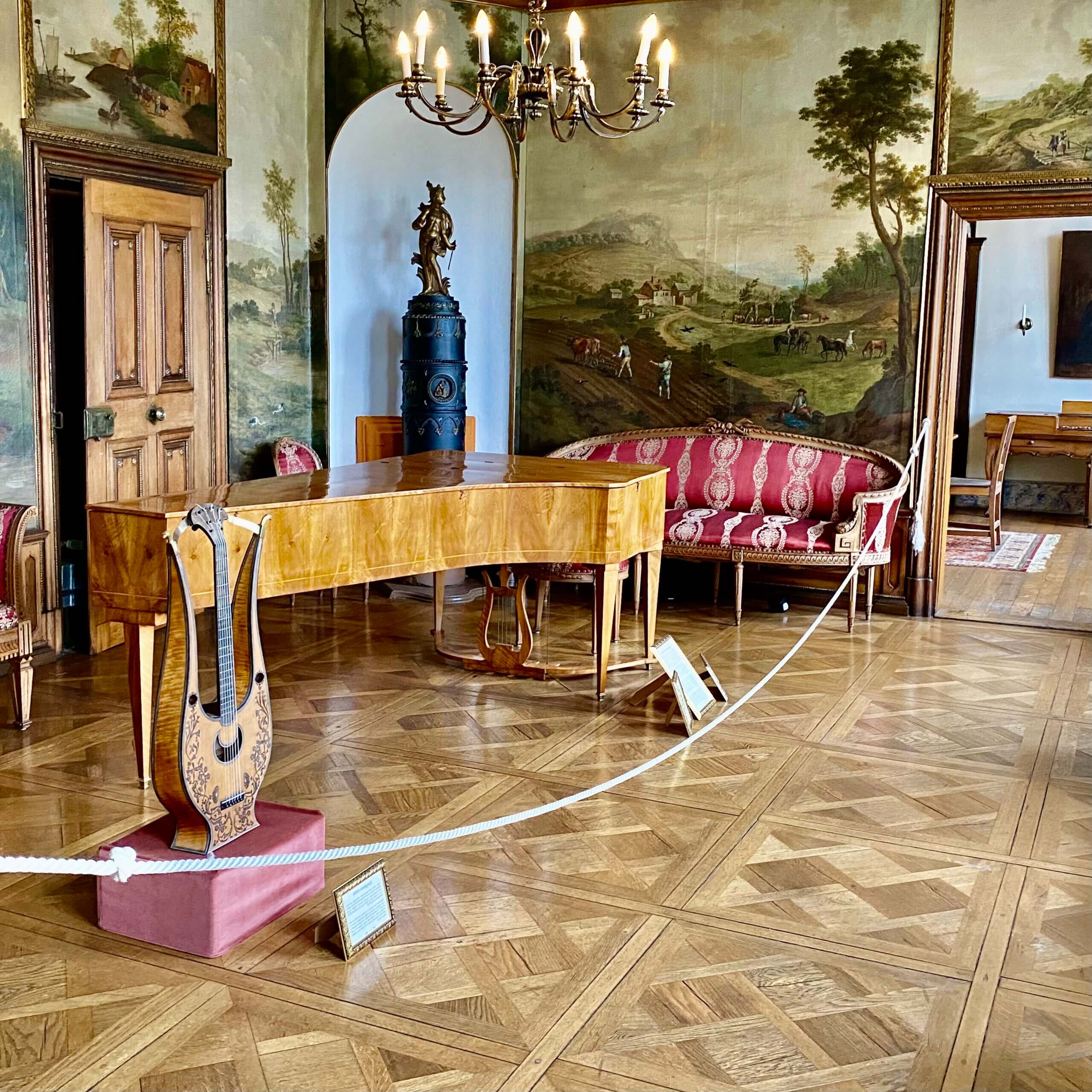Mittelmosel-Museum (Middle Moselle Museum), Traben-Trarbach
Moselle, river kilometre 107
“The music salon … has always been the representative room of the baroque Böcking villa. Originally decorated with a hand-painted paper wallpaper, it received its present furnishings probably after the wedding of the grandson of the house’s builder Louis Böcking in 1788.
The room is dominated by a precious landscape wallpaper, which was probably painted by several unknown artists with oil paints on canvas in a Frankfurt manufactory after motifs from the poem “Spring” by the poet Ewald Christian von Kleist. It depicts a romantically idealised fantasy landscape in which only selected scenes from the poem were composed.
The two elaborately carved console tables and wall mirrors – as well as the three chairs and the canapé on the left side of the room – are also from the original room furnishings in the course of the redesign of the salon in the Louis Seize style.
It is quite likely that Johann Wolfgang von Goethe, when he found a friendly welcome in the baroque villa Böcking a few years later after his adventurous storm voyage on the Moselle on the second of November 1792, was received and entertained in this salon, which had only recently been expensively renovated,” reads a statement in the room today.
Around 1750, the Trarbach merchant Johann Adolf Böcking (1695-1770) had the villa built in the style of the Trier Baroque. Until the beginning of the 20th century, it was the representative domicile of six generations of the family. The founding father of the Böckings was, among other things, the state treasurer of the Dukes of Zweibrücken. Today, we mere mortals are also allowed to enter the house where, in addition to Goethe, the Prussian King Friedrich-Wilhelm IV and the French poet Apollinaire were guests.
